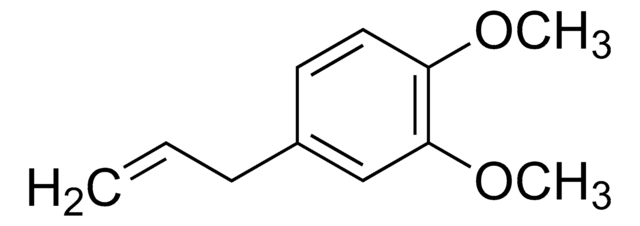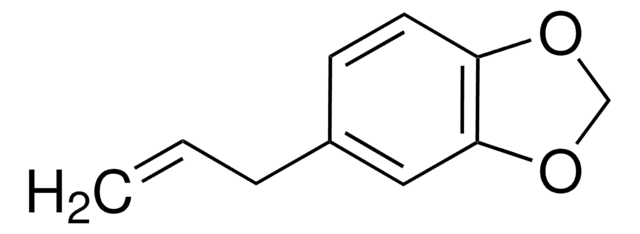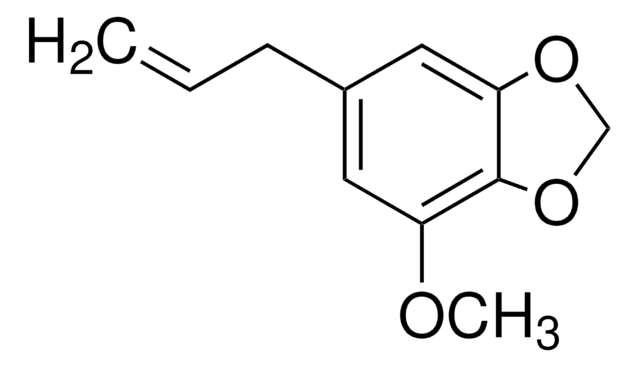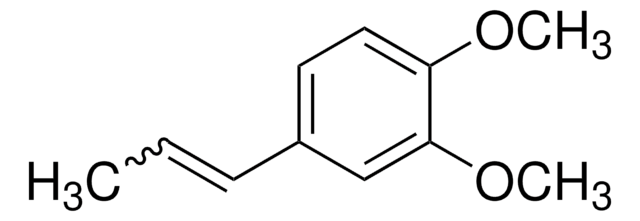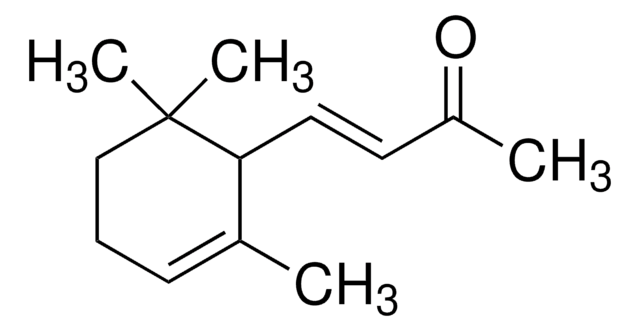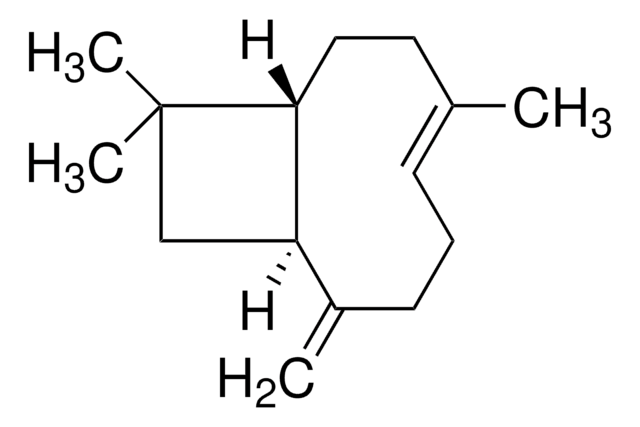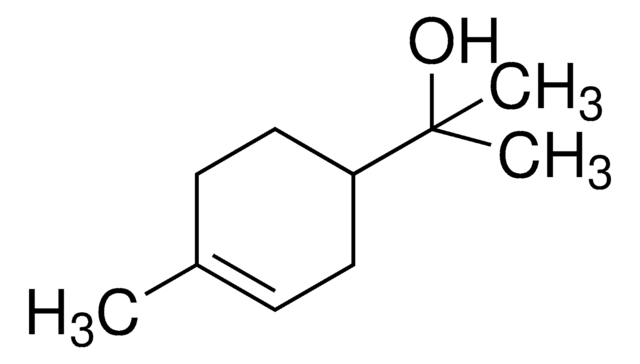04607
Eugenol-methylether
analytical standard
Synonym(e):
Eugenol-methylether, 4-Allyl-1,2-dimethoxy-benzol
About This Item
Empfohlene Produkte
Qualität
analytical standard
Qualitätsniveau
Assay
>98% (GC)
Haltbarkeit
limited shelf life, expiry date on the label
Methode(n)
HPLC: suitable
gas chromatography (GC): suitable
Brechungsindex
n20/D 1.534 (lit.)
bp
254-255 °C (lit.)
mp (Schmelzpunkt)
−4 °C (lit.)
Dichte
1.036 g/mL at 25 °C (lit.)
Anwendung(en)
cleaning products
cosmetics
flavors and fragrances
food and beverages
personal care
Format
neat
Lagertemp.
2-8°C
SMILES String
COc1ccc(CC=C)cc1OC
InChI
1S/C11H14O2/c1-4-5-9-6-7-10(12-2)11(8-9)13-3/h4,6-8H,1,5H2,2-3H3
InChIKey
ZYEMGPIYFIJGTP-UHFFFAOYSA-N
Suchen Sie nach ähnlichen Produkten? Aufrufen Leitfaden zum Produktvergleich
Allgemeine Beschreibung
Anwendung
- Essential oil of Pimenta pseudocaryophyllus using high-performance liquid chromatography (HPLC). The purity of the extracted compound is then determined by gas chromatography coupled to flame ionization detector (GC/FID).
- Stem bark of Cinnamomum zeylanicum Blume using reversed-phase high-performance liquid chromatography (RP-HPLC) with UV-visible detection.
- Rosa hybrida using gas-chromatography coupled to mass spectrometry (GC-MS) technique.
Verpackung
Sonstige Hinweise
Signalwort
Warning
H-Sätze
Gefahreneinstufungen
Acute Tox. 4 Oral - Aquatic Chronic 2 - Carc. 2 - Muta. 2
Lagerklassenschlüssel
10 - Combustible liquids
WGK
WGK 1
Flammpunkt (°F)
230.0 °F - closed cup
Flammpunkt (°C)
110 °C - closed cup
Hier finden Sie alle aktuellen Versionen:
Besitzen Sie dieses Produkt bereits?
In der Dokumentenbibliothek finden Sie die Dokumentation zu den Produkten, die Sie kürzlich erworben haben.
Kunden haben sich ebenfalls angesehen
Unser Team von Wissenschaftlern verfügt über Erfahrung in allen Forschungsbereichen einschließlich Life Science, Materialwissenschaften, chemischer Synthese, Chromatographie, Analytik und vielen mehr..
Setzen Sie sich mit dem technischen Dienst in Verbindung.